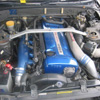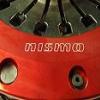Uas 300Zx Vs. Standard 300Zx Aero Analysis And Results
Announcements
-
Similar Content
-
Latest Posts
-
By Car Photographers · Posted
I’m an automotive photographer based in Sydney, but just dropping this here in case anyone else from NSW is looking. I’ve been photographing cars for more than 10 years, working with private owners, collectors, dealerships, and brands. You can check out my work here: carphotographers.com.au Would definitely recommend finding someone local in Melbourne who understands how to shoot Skylines properly — the angles and light really make a difference. If you ever drive up this way, happy to shoot it for you. -
Looks like the brief relationship between Honda and Nissan resulted in Honda stealing the Z profile designs. I'm not a fan at all. 👎🏻 https://www.autoblog.com/news/seeing-the-new-honda-prelude-up-close-reveals-its-retro-magic
-
By Watermouse · Posted
Great interview on damper settings and coil selection by HPA https://www.facebook.com/HPAcademy/videos/30284693841175196/?fs=e&s=TIeQ9V&fs=e -
The values for HID colour are also defined ~ see https://www.legislation.gov.au/F2006L02732/latest/text ~ goto section 3.9 onwards ....
-








Recommended Posts
Create an account or sign in to comment
You need to be a member in order to leave a comment
Create an account
Sign up for a new account in our community. It's easy!
Register a new accountSign in
Already have an account? Sign in here.
Sign In Now